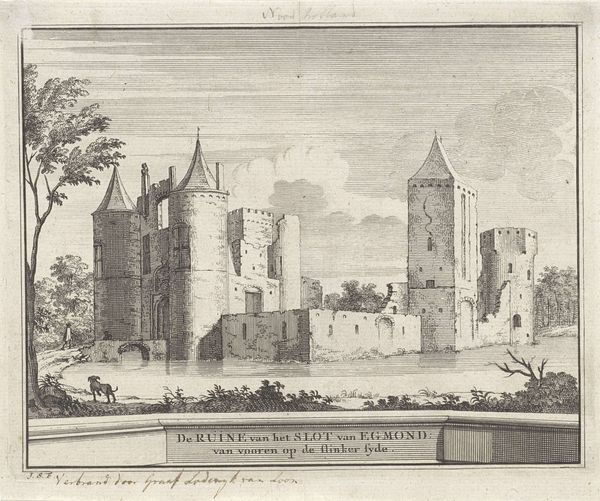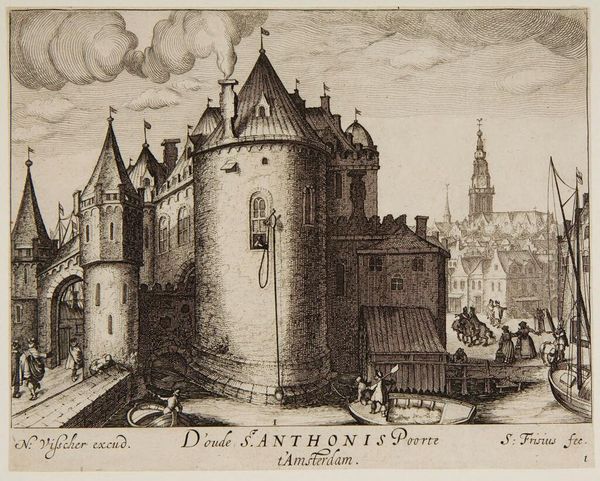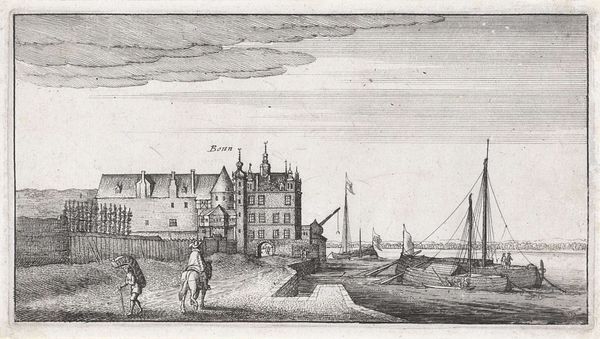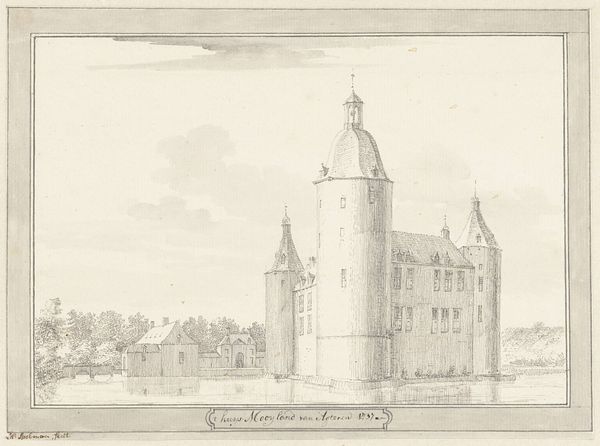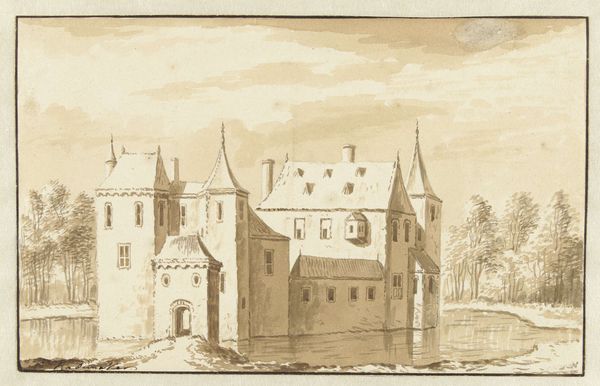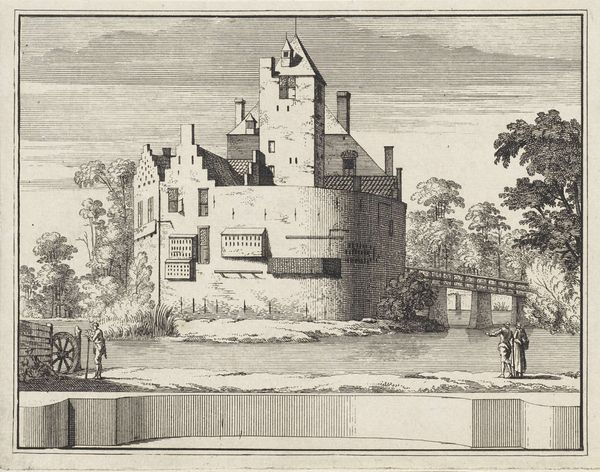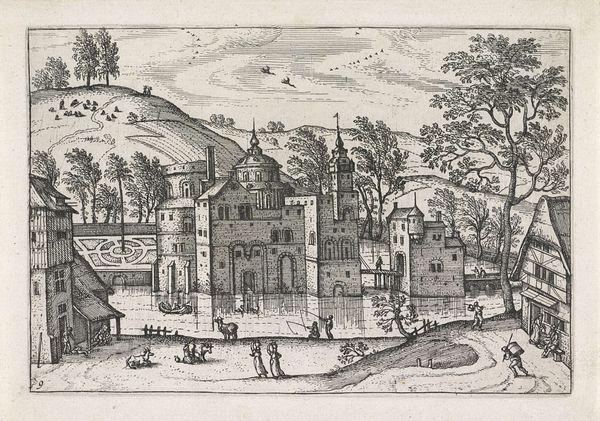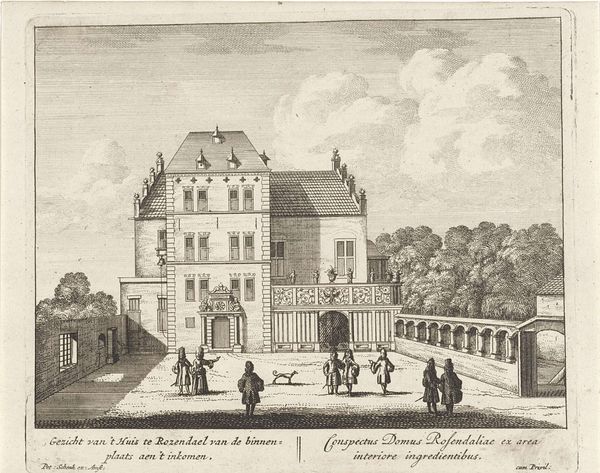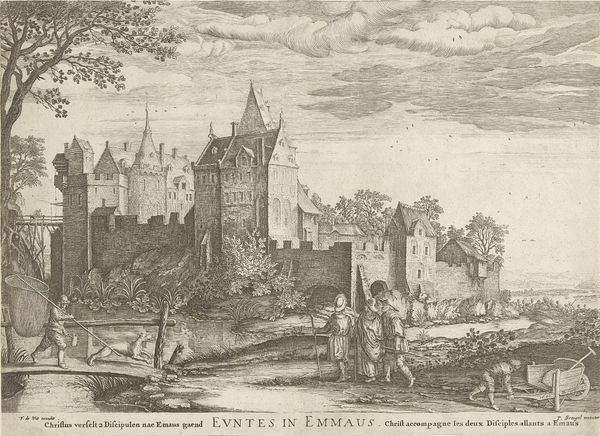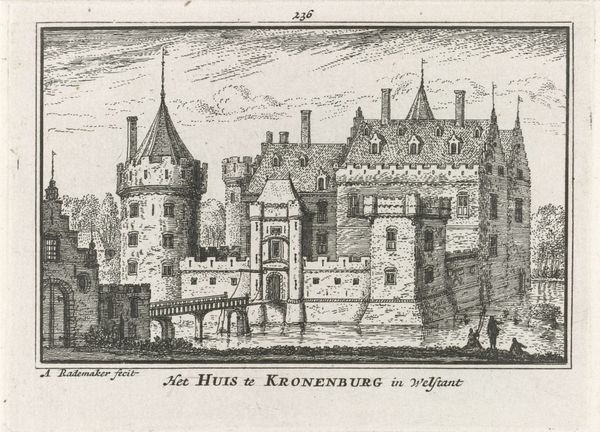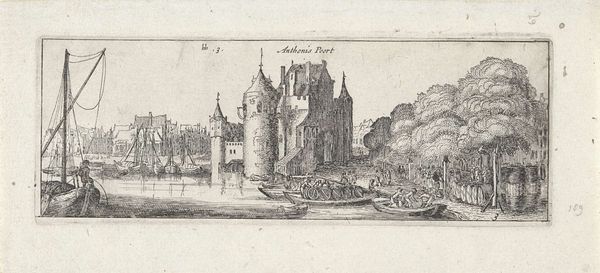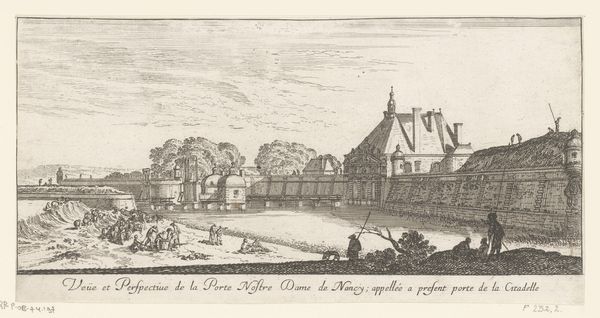
print, engraving, architecture
#
baroque
# print
#
landscape
#
engraving
#
architecture
Dimensions: height 80 mm, width 115 mm
Copyright: Rijks Museum: Open Domain
Editor: So, this engraving is called "Huis ter Lede" by Abraham Rademaker, dating from 1727 to 1733. It depicts a rather grand, almost fairytale-like building surrounded by water. It has such a somber feel, despite the precision of the architectural details. What jumps out at you when you look at this piece? Curator: The water, immediately. Isn't it funny how water can add to a sense of tranquility, and, at the same time, evoke the feeling of being kept away or of something inaccessible? And the castle itself looks like a complex layer cake, doesn't it? A fortified fantasy rising from the stillness. I imagine the lives lived within those walls... all the secrets held, the celebrations, the worries. The engraving style only reinforces the sense of a world carefully constructed. Editor: Absolutely. There is so much detail within the lines. Do you think Rademaker was trying to capture a realistic representation of this building, or was he perhaps romanticizing it? Curator: Well, "realistic" is a slippery term, isn't it? Especially when dealing with something like architecture. It seems to be somewhere in-between – a document of a building, but touched by a kind of nostalgic vision, a "once upon a time" atmosphere that hangs in the air. The very act of making a print immortalizes a place, tinges it with longing. Is that something you feel too? Editor: Yes, definitely! The print format makes it feel more like a memory than a solid, unchangeable structure. I like that nostalgic element that comes from it. Curator: Perhaps that's the trick, then - Rademaker making something tangible from intangible memories. Gives you goosebumps, doesn't it?
Comments
No comments
Be the first to comment and join the conversation on the ultimate creative platform.


